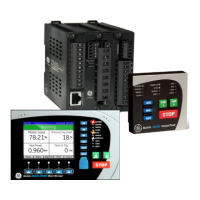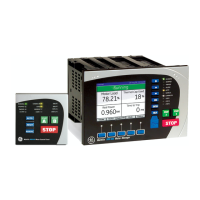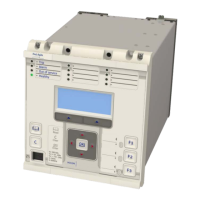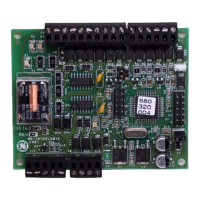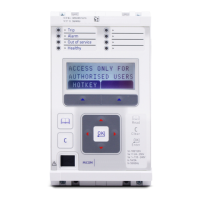5 APPLICATION NOTES
5.1 RESET MECHANISMS FOR CB FAIL TIMERS
It is common practise to use low set undercurrent elements to indicate that circuit breaker poles have interrupted
the fault or load current. This covers the following situations:
● Where circuit breaker auxiliary contacts are defective, or cannot be relied on to definitely indicate that the
breaker has tripped.
● Where a circuit breaker has started to open but has become jammed. This may result in continued arcing at
the primary contacts, with an additional arcing resistance in the fault current path. Should this resistance
severely limit fault current, the initiating protection element may reset. Therefore, reset of the element may
not give a reliable indication that the circuit breaker has opened fully.
For any protection function requiring current to operate, the device uses operation of undercurrent elements to
detect that the necessary circuit breaker poles have tripped and reset the CB fail timers. However, the
undercurrent elements may not be reliable methods of resetting CBF in all applications. For example:
● Where non-current operated protection, such as under/overvoltage or under/overfrequency, derives
measurements from a line connected voltage transformer. Here, I< only gives a reliable reset method if the
protected circuit would always have load current flowing. In this case, detecting drop-off of the initiating
protection element might be a more reliable method.
● Where non-current operated protection, such as under/overvoltage or under/overfrequency, derives
measurements from a busbar connected voltage transformer. Again using I< would rely on the feeder
normally being loaded. Also, tripping the circuit breaker may not remove the initiating condition from the
busbar, and so drop-off of the protection element may not occur. In such cases, the position of the circuit
breaker auxiliary contacts may give the best reset method.
5.2
SETTING GUIDELINES (CB FAIL TIMER)
The following timing chart shows the CB Fail timing during normal and CB Fail operation. The maximum clearing
time should be less than the critical clearing time which is determined by a stability study. The CB Fail back-up trip
time delay considers the maximum CB clearing time, the CB Fail reset time plus a safety margin. Typical CB
clearing times are 1.5 or 3 cycles. The CB Fail reset time should be short enough to avoid CB Fail back-trip during
normal operation. Phase and ground undercurrent elements must be asserted for the CB Fail to reset. The
assertion of the undercurrent elements might be delayed due to the subsidence current that might be flowing
through the secondary AC circuit.
P543i/P545i Chapter 12 - CB Fail Protection
P54x1i-TM-EN-1 361
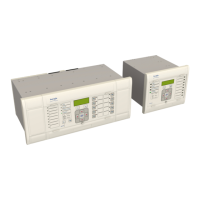
